Article's Content
Huh? What’s that? I can’t hear you over the noise of the internet.
Welcome to the world’s biggest cocktail party.
With COVID-19 pushing everyone online, the internet has quickly become a jam-packed arena. Just by opening a single app or web page, a battle of the brands begins the fight for a user’s attention and information.
So, why would they give their information to you?
You probably have great reasons why. Maybe you have features that separate you from your competition or you go above and beyond their original ask. But that doesn’t matter if your business can’t cut through the noise of other brands.
You have to give people an incentive. Before they’re willing to share their personal information they need to know what’s in it for them. You have to pull them in with an enticing tidbit that not only interests them but also provides value.
Enter — the lead magnet.
What actually is a lead magnet?
A lead magnet is exactly what it sounds like; information that attracts leads, much like the pull of a magnet.
It comes in the form of a free, downloadable resource that your company offers in exchange for a customer’s contact information (usually their email address).
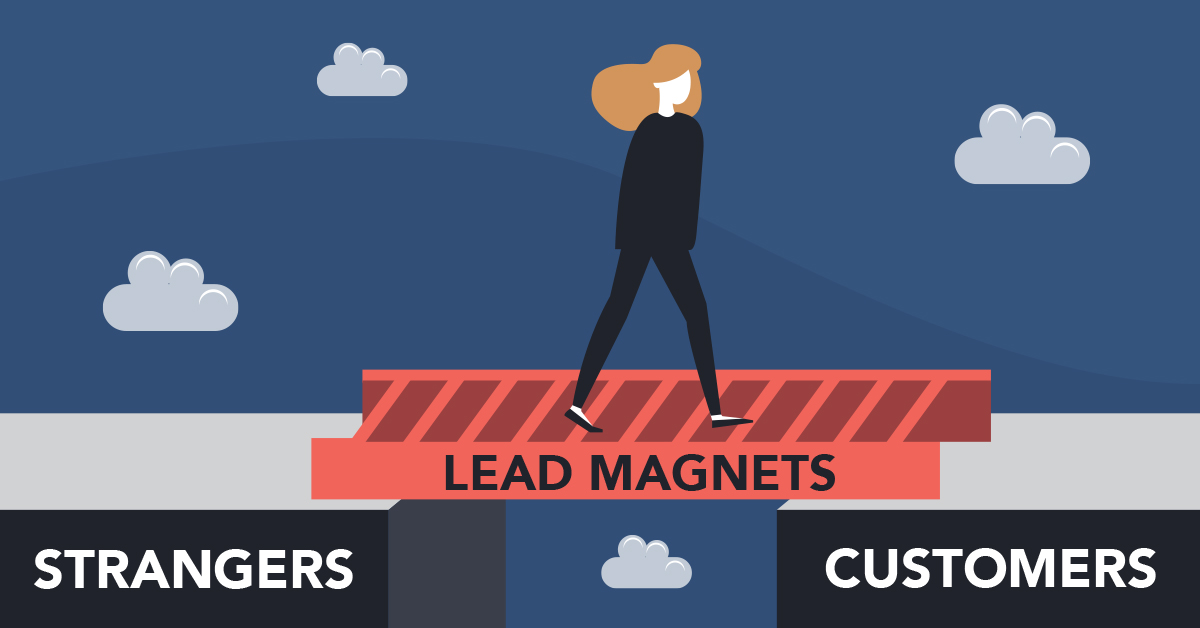
How lead magnets work
Lead magnets help to educate users, but they can also serve as an icebreaker between a brand and a potential customer. Choose your content carefully because first impressions are everything.
A lead magnet is only as useful as it is relevant to your audience. Which is why one of the most important aspects when choosing a lead magnet is to make sure it’s something that your ideal audience is interested in.
Here are some lead magnet ideas for B2B businesses, along with examples, that are proven to help generate leads.
#1 Free Courses
A popular lead magnet option has been free courses. Courses are a brilliant way to connect with your audience and help feed the hunger that is life-long learning.
Hubspot has been a major leader in online courses. Hubspot Academy offers a variety of courses, which allows them to draw in a large audience to then inform of their other services.
With courses as short as 30 minutes you can become a specialist on a topic during a lunch break!
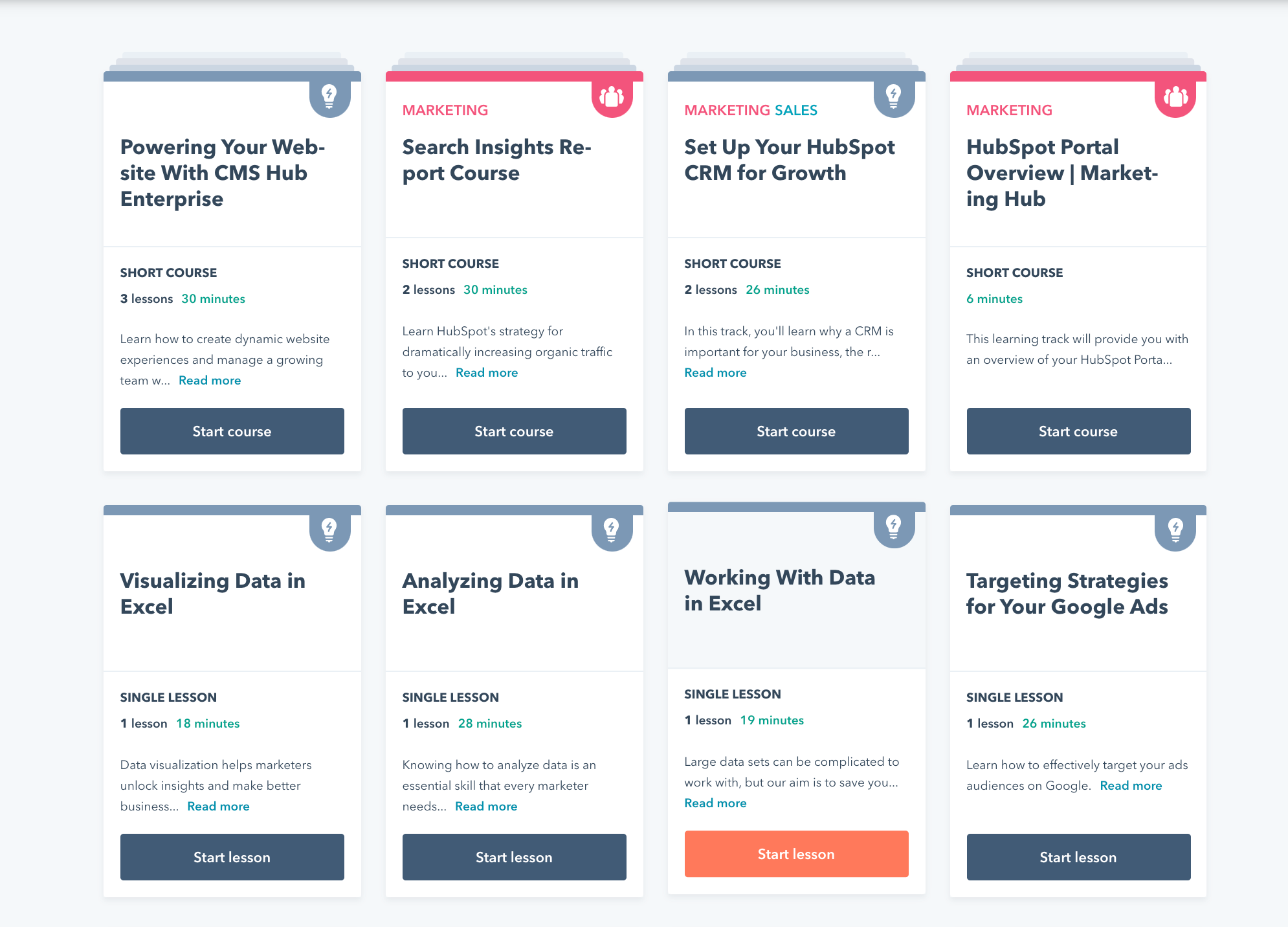
#2 eBooks
Remember when Kindles first came out?
They were the catalyst for eBooks to soar to popularity. But eBooks remain popular today because of their portable format and easily accessible features.
They’ve quickly become another popular lead magnet as they allow companies to offer their expertise and offerings while educating their audiences on a particular topic.
Good example of eBook lead magnets in action: Search Engine Journal.
They’ve mastered the eBook lead magnet, with a digital library full of eBooks on all sorts of digital marketing topics. By not only crafting quality eBooks but making a lot of them, they can be sure that once a reader is done with one book they’ll be back to their site soon.
#3 Comprehensive Guides
There’s no doubt the benefits that come with having a mentor. Whether it’s personal, professional, or even niche-specific, having someone who is knowledgeable and able to guide you is a plus.
Through a comprehensive guide, you can provide your audience with a virtual mentor. Creating an all-knowing guide on a subject you’re experienced in helps lead your readers down the right path. It also gives you a chance to flaunt what you know you’re good at.
Unbounce created a beautiful guide on the art of creating mobile landing pages.
This guide looks at the ins and outs of making a landing page, step by step. It also includes video tutorial pop-out windows to help give clear instruction.
By creating a complete guide, Unbounce not only created a powerful incentive to share an email, but they demonstrated their deep knowledge of landing pages in the process.
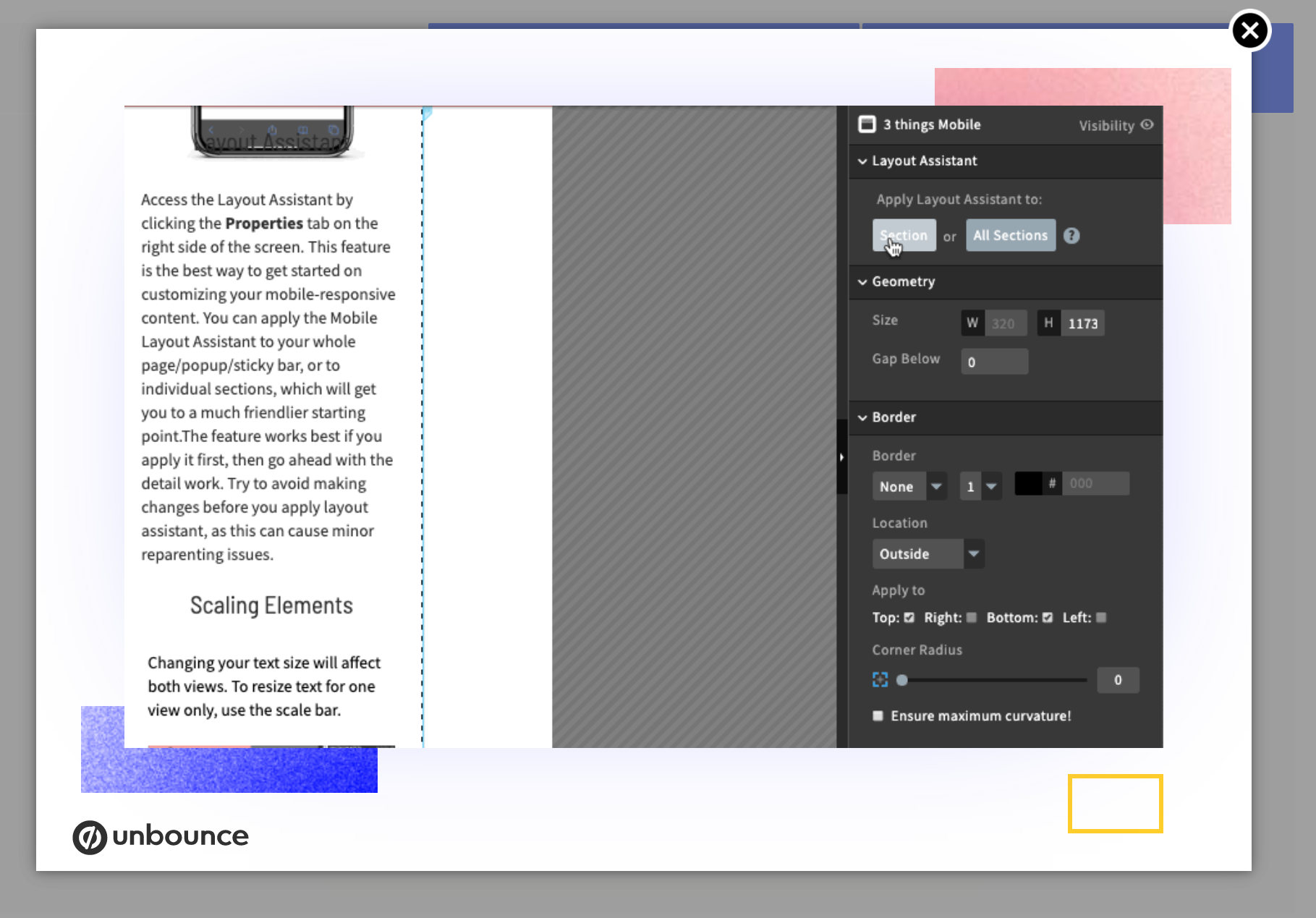
#4 Checklists
Ah, checklists, the backbone of society.
Just kidding.
But it is true that checklists can do wonders for our productivity. It’s even been shown that checklists help to train our brain to be more motivated to finish tasks. So it’s no surprise that checklists make a great lead magnet. Plus, they’re super easy for a business to create and offer.
Almost every business has at least one area or service that can be turned into a checklist. Whether it’s a social media checklist or a content distribution checklist, you can turn just about anything you do into a checklist for readers.
Take a look at Gill Andrews, a copywriter and website consultant who knows how to make an intriguing checklist.
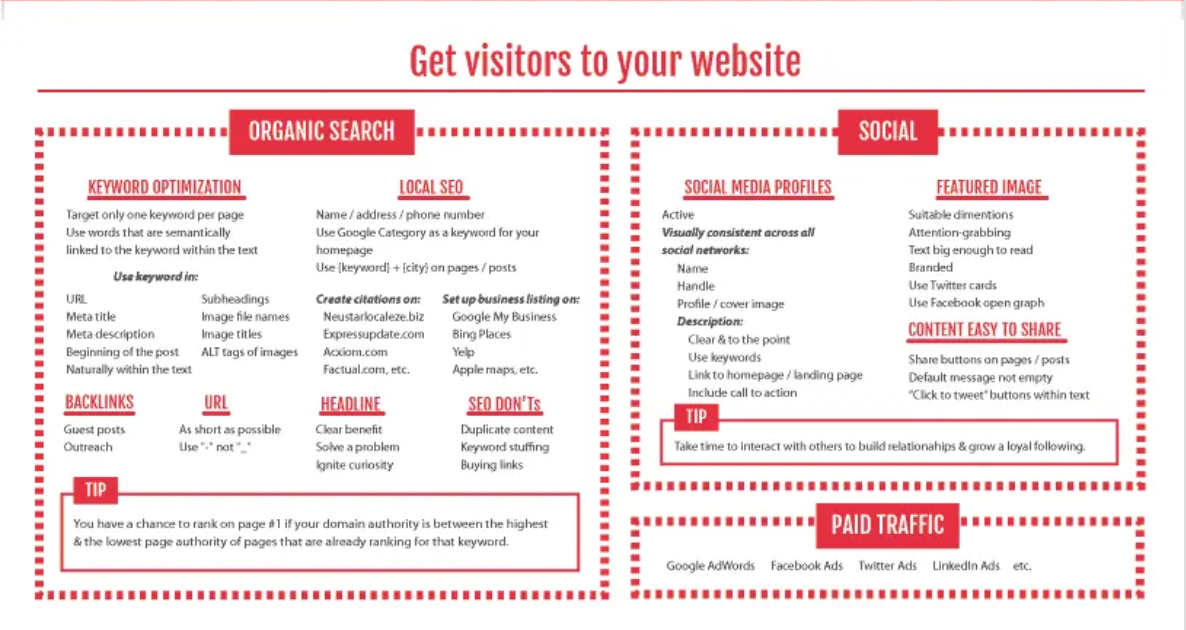
By offering a variety of checklists, she is able to tap into many different audiences. Not only does the checklist help her readers, but if they find an area on the checklist that they’re missing, I bet they know who they’re reaching out to for help.
#5 Templates
As your business grows, it becomes less about content creation and more about content distribution. However, creating content takes time, and time is money as they say.
Templates are a great way to help save time while still maintaining good quality. They help fill in some of the blanks, so you don’t have to start from scratch every time. You can tailor templates to your specific industry.
Mailshake nails the template lead magnet with their Email Marketing Templates.
They offer a background on the importance of a good email, as well as giving a sneak peek of the templates so you get a taste for what the download includes.
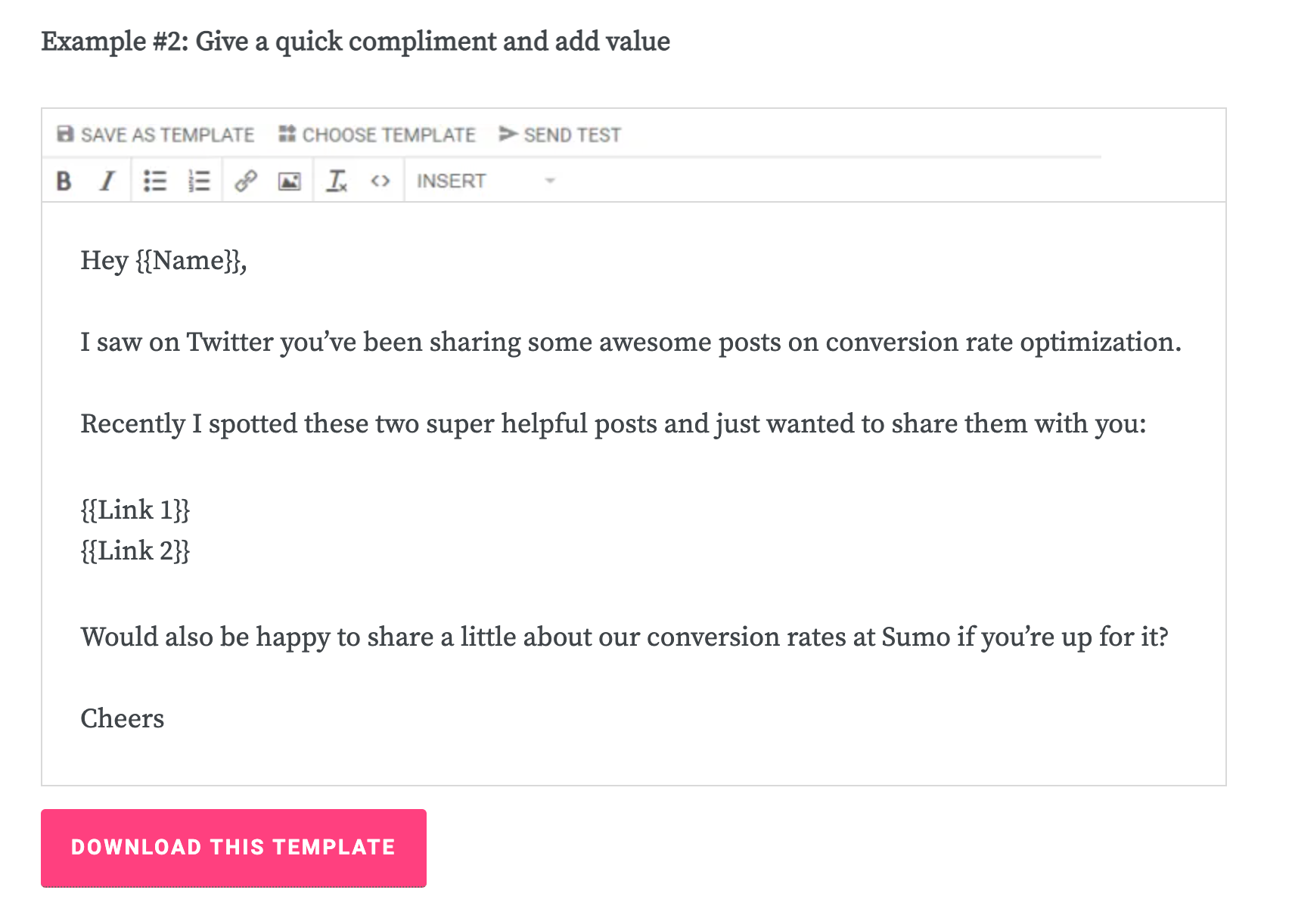
#6 Playbooks
Playbooks are commonly used in sports. They help lead a team to success through strategies and plays.
The same concept can be used for those in the B2B industry.
It’s one thing to be knowledgeable on a subject, but if you don’t know how to put that knowledge into action then it diminishes its full potential. Playbooks are a way for a company to share their knowledge on a topic and teach their readers how to hit the ground running.
Close hit the nail on the head with their playbook download.
By offering strategies on navigating sales in a remote world, they touched on an area that a lot of companies are struggling with because of COVID-19. Their sales playbook educates readers and provides them with ‘plays’ on what to do next.
#7 White Papers
Problem-solving: the age-old task. As inevitable as problems are, you can use them as an opportunity to show your knowledge.
White papers do just that.
Taking a deep dive analysis, white papers look at the problems within an industry and solutions to solve them. Using white papers as a lead magnet brings your readers with you on an in-depth look into an industry issue and then presents a solution to it (typically including your product/service).
Plaid, for example, dives into the world of finance in their white paper discussing the impact of accessible payroll data.
They discuss the current state of payroll data access and how that affects consumers in other areas of their life. The white paper also looks at leaders within the industry and how open payroll data access can improve what they can offer for their consumers.
That’s just the overview.
They go further in-depth in their white paper, but they pique the interest of readers in the summary. Establishing a great authority in the overview adds credibility to them and their products, plus it leads to more downloads from interested readers.
#8 Research Reports
Nothing hits harder than cold, hard facts (and by facts, we mean data).
Looking at the numbers is always a great way to get a benchmark on how you stand out from the competition. This is why research reports are so popular. They provide a great overview of a topic full of statistics to support their claims.
JLL knows how to make an enticing research report.
As a leader in the industry, they’re familiar with what goes into a good research report. Combining intel from ground professionals along with their own company analysis, JLL provides a data-heavy, all-in-one view on industry topics.
On top of pulling in leads, JLL’s research reports have generated about 14,000 backlinks to their site. It’s time to consider if you should make a report.
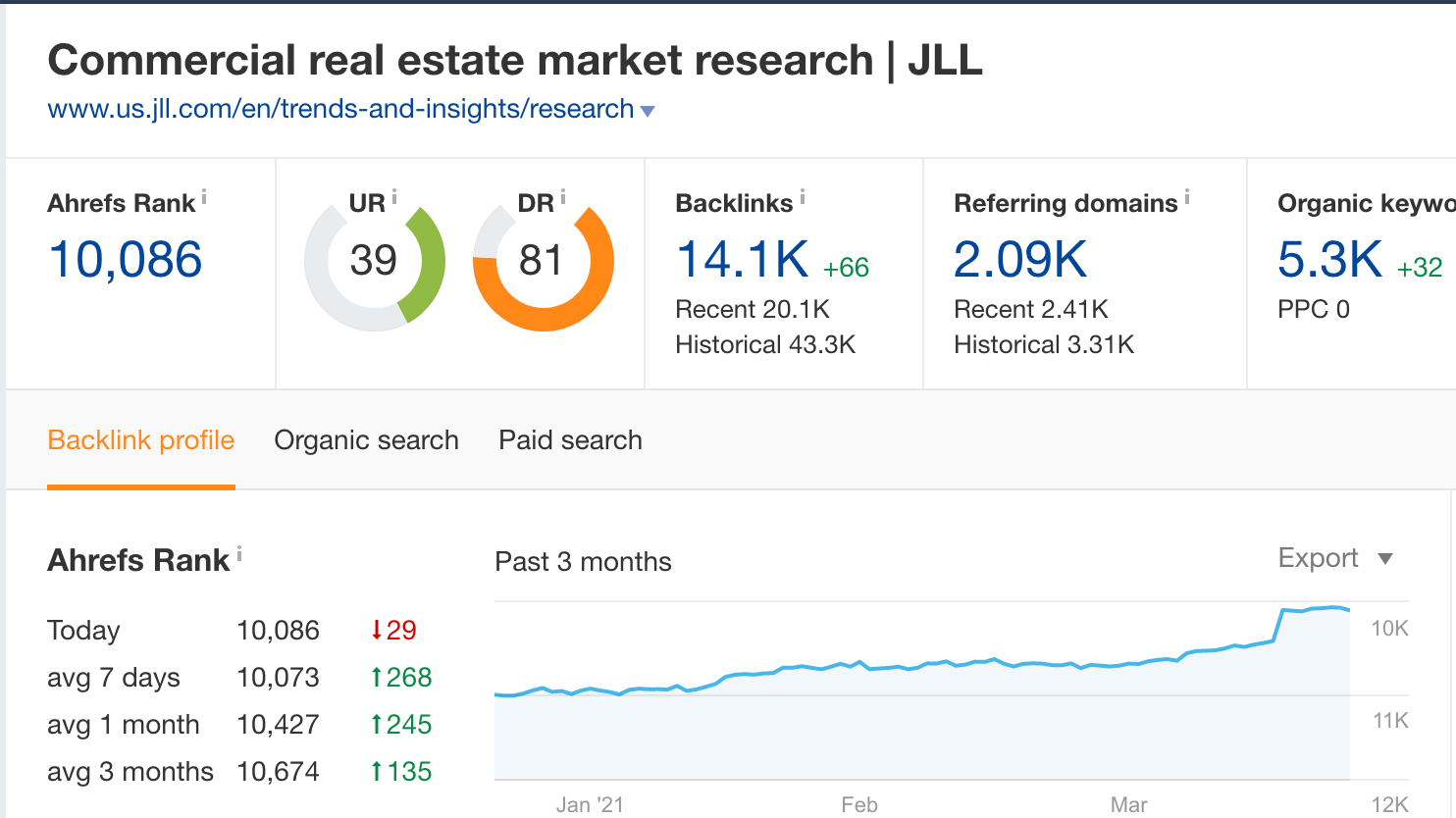
Wrapping up
So welcome to the Lead Magnet Party!
Don’t be intimidated by the number of guests, rather marvel at the potential number of people you have to reach. Think about what you can offer to customers that educates them and demonstrates your expertise. Giving out free resources with relevant information and content can attract some of the best leads.
But don’t forget – lead magnets are just the start of a relationship between you and your ideal customer.
After you’ve drawn them in with a great lead magnet, make sure to stay consistent with your content. Continue to create great pieces and make sure you have a solid distribution strategy to help retain the great leads you just pulled in.
If you need help crafting a strategy to keep your audience engaged across all platforms, check out our marketing strategy guide. It’s based on case studies of successful B2B companies and filled with other great resources, making it a great start for developing a solid strategy.
Let us know in the comments which lead magnet is your favorite!







